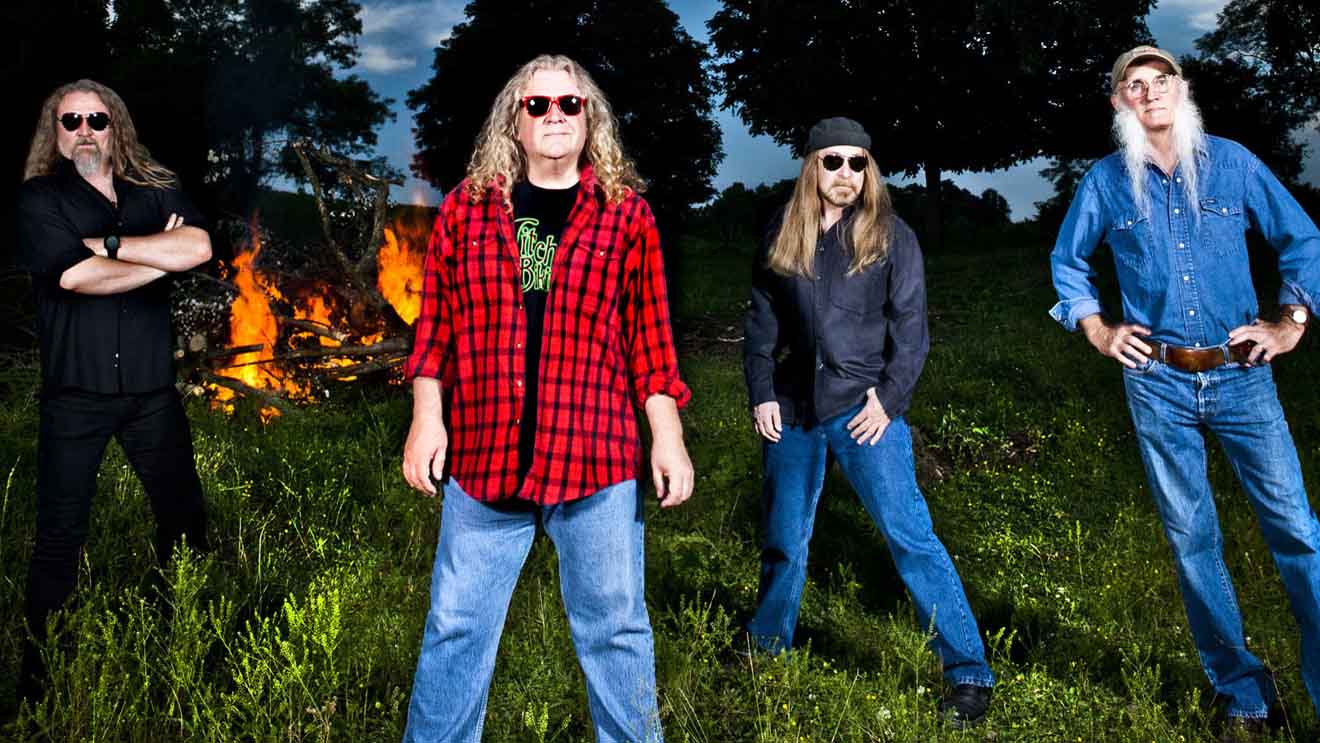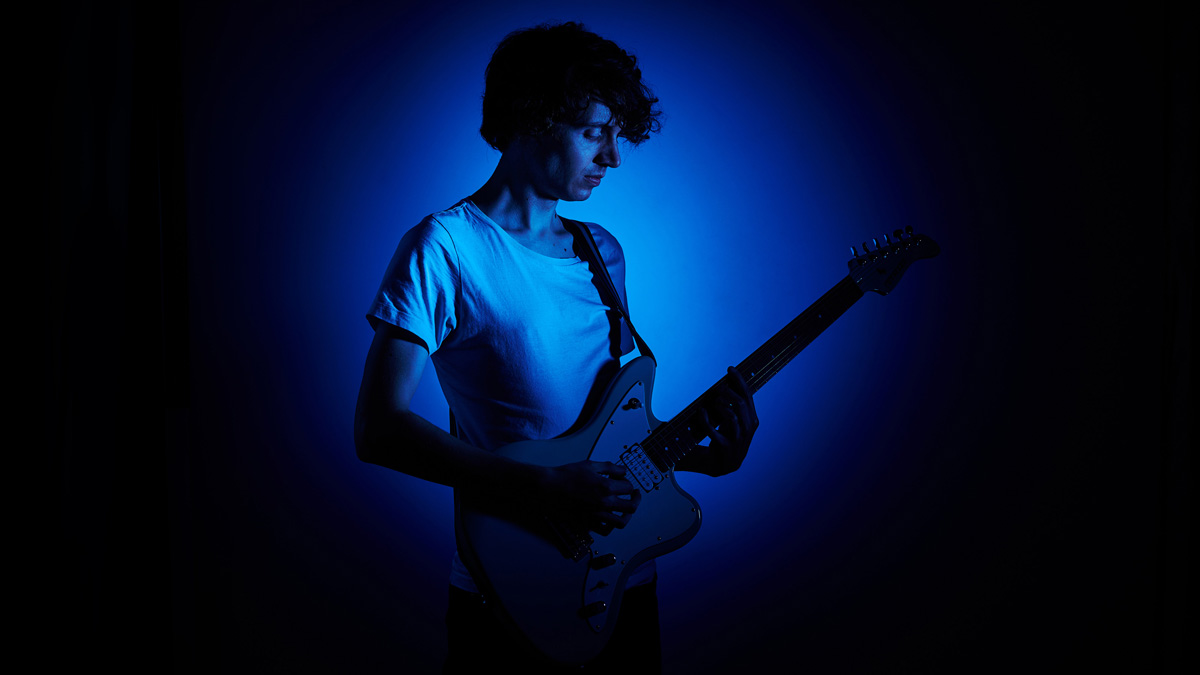10 questions for The Kentucky Headhunters' Greg Martin
First guitars, lost loves and playing tips

Where the swagger of Southern rock meets country's infectious hooks, you'll find longstanding American rock behemoth The Kentucky Headhunters, whose mantlepiece is populated by Grammy and Country Music Awards, won throughout their storied four-decade-plus career.
The band's latest album, Meet Me In Bluesland, is a collaboration with Rock and Roll Hall of Fame inductee and pianist extraordinaire Johnnie Johnson, but the group are currently setting their sights on their first ever UK tour, which begins in July - the result of some gentle persuasion from frontman Richard Young's son, John Fred Young, of Black Stone Cherry drumming fame.
Guitar fans should be especially excited by the trip, because lead guitarist Greg Martin is the stuff of legend - for his lyrical playing as much as his almighty gear collection.
Before he began packing his suitcases, not to mention his hardcases, we grabbed Greg to get the lowdown on his most treasured electrics and the importance of good grammar in soloing…
1. What was your first guitar and when did you get it?
"I got my first guitar in the Fall of 1968. My older brother Gary gave me a 1950s Gretsch Silver Jet that he had taken and painted the front black. Evidently, he hated the 'silver sparkle' finish and decided black would look better.
"When I received the guitar, it was a shambles. I sat on my Aunt's porch one Saturday afternoon and painstakingly stripped off the black paint back to its original state, and put it back together. In 1968, my brother became enthralled with bluegrass music, so I inherited the Gretsch, a Magnatone amp and his record collection.
"On the Gretsch, I learned my first blues licks, how to Travis Pick, but most important, I fell in love with playing guitar. I'll always be grateful to my brother, who passed away in 2013, for this guitar and for instilling in me the love of vintage instruments."
Get the MusicRadar Newsletter
Want all the hottest music and gear news, reviews, deals, features and more, direct to your inbox? Sign up here.
2. The building's burning down - what one guitar do you save?
"That is a hard question! If it's only one guitar, it would have to be my original 1958 Gibson Les Paul 'burst with PAFs, given to me by Hank Williams Jr.
In 2014, Gibson Custom Shop did a replica of my 1958 Les Paul for their Collector's Choice series
"After seeing John Sebastian play a 1959 'burst with The Lovin' Spoonful in 1966 and hearing Michael Bloomfield on his 1959 'burst with The Electric Flag, I gravitated to a Les Paul early on. My '58 was originally owned by Ed King of Lynyrd Skynyrd fame, then Hank Jr. It has quite a lineage.
"In 2014, Gibson Custom Shop did a replica of my 1958 for their Collector's Choice series - mine is CC #15. Joe Bonamassa named my guitar Hank The Plank."
3. Is there a guitar, or piece of gear, that you regret letting go?
"Way too many regrets in that department! I hate that I no longer own the '50s Gretsch Silver Jet that my brother gave me. I also regret letting go of a TV Yellow 1958 Les Paul Special that I played during my high school years, a 1972 Les Paul Custom that my dad bought me for graduation from high school, a 1965 Olympic White Stratocaster, a 1959 refin Strat I used on [the Grammy Award-winning] Pickin' On Nashville…
"I've owned at least 150 guitars over the years - my brother Gary taught me the art of trading up, so many are long gone. There's two amps I wish I still owned: a 1969 Guild Thunderstar, my first amp - I actually made instalment payments on it. Also, the Magnatone amp my brother gave me 1968."
4. And what's the next item of gear you'd like to acquire?
"I recently acquired a 1963 Gibson ES-335 with PAFs and stop tail-piece, also a 1957 Telecaster. By the grace of God, and if the fates allow, my next acquisitions will be another '60s rosewood Stratocaster and a '50s blackguard Telecaster."
5. Is there an aspect of guitar playing that you'd like to be better at?
"As I've gotten older, rhythm guitar has become equally important as playing solos. Let's face it, the late '60s and early '70s was a fertile time in history for music and guitar playing. Michael Bloomfield, Jimi Hendrix, Eric Clapton, Jeff Beck, BB King, Jimmy Page, Chet Atkins and Merle Travis all made a huge impact on me during my formative years. I feel like I found my voice on the instrument in the early '90s; now, it's a matter of expanding on what I do and becoming a more rounded guitarist.
A good solo should be like a letter to a close friend: you wouldn't want to use all caps, and you'd certainly want to use proper punctuation
"When I'm soloing, I'm just as interested in the space I leave between my phrases than the actual notes I play. A good solo should be like a letter to a close friend: you wouldn't want to use all caps, and you'd certainly want to use proper punctuation and form to convey your thoughts.
"Of course, playing more melodic and tasteful is always a quest. I'd love to get a better grasp on chord inversions and substitutions. I constantly work on my tone and vibrato. My influences growing up were Eric Clapton, Jimi Hendrix, Ronnie Montrose, Mike Bloomfield, Billy Gibbons, Peter Green, Mick Taylor, BB King, and Leslie West - they all had beautiful finger vibratos. I'm still trying to figure it out after all these years!"
6. When did you last practise and what did you play?
"I don't sit down to actually practise these days, but I do play every day at home. I honestly have a guitar in every room - I even have a guitar next to my bed. It's the first thing I see in the morning!
I even have a guitar next to my bed. It's the first thing I see in the morning!
"My favourite time to play is early in the morning after I feed our cat. I will sit in the kitchen, where there are great acoustics, and play for 30 minutes to an hour. I'll just play whatever comes to me at the time - a rhythm groove, licks, chords. I spend more time playing blues and Merle Travis thumb picking these days.
"My focus these days is to play better blues guitar, plus learn more about playing soul and funk rhythm. I also take a guitar and small tweed Champ amp to the hotel room on the road and play a bit everyday."
7. If you could have a guitar lesson from one guitarist, dead or alive, who would it be?
"If I could sit down with the late Chet Atkins for a private lesson, just to grasp his use of chords and melody, I'd be ecstatic. He also had a beautiful touch and tone, which is very important to me. Also, a lesson from Merle Travis, BB King, and Michael Bloomfield would be nice."
8. What gear would you take with you to a desert island?
"Assuming it was like Gilligan's Island and there was electricity, I would take my 1958 Les Paul Standard, my 1957 Strat, 1963 ES-335, and my 1957 and 1959 Telecasters. I would take my favorite 1960 tweed Champ amp, blackface '60s Fender Super Reverb, and my Plexi 1967 Marshall Super Lead 100 stack.
"I would also take my guitar tech along to help carry everything! On the acoustic side, I would take my 1972 Martin D-28 and 1973 D-35."
9. What's the worst thing that's ever happened to you onstage?
I sat in with Gov't Mule and I blew Warren Haynes' Custom Audio head up
"Back in the '90s, my friend Jack Sonni (former Dire Straits guitarist) was working for Rivera Amps as their artist rep. We had become friends through jamming at the Dallas Guitar Show, so he sent me one their amps to try out with The Headhunters. About 15-20 minutes into our set, I noticed the amp was cutting in and out - I looked back and it had smoke and flames coming out of the back. Needless to say, I went back to Marshall amps right away!
"Another time, I sat in with Gov't Mule, I blew Warren Haynes' Custom Audio head up. Warren Haynes is a dear old friend - he still kids me about it today."
10. What advice would you give your younger self about playing the guitar?
"My focus was never to be a rock star or to get rich, although playing well and making a living with music has always been important. My advice would be, practise and play the instrument because you love it. Surround yourself with musicians better than yourself.
Play from the heart, love what you do, be the best you can be - you're leaving a legacy
"Listen to the band, have big ears! You have two ears; listening will make you a more dynamic player. Listen and copy your favourite players early on, but find your own distinct voice on the instrument. God gave each of us a voice: find it.
"Stay humble and teachable. Play from the heart, love what you do, be the best you can be - you're leaving a legacy. Remember, there's no better or best; be the best you can be. As Muddy Waters taught us, "You don't have to be the best one; just be a good 'un" That just about says it all - always strive to be a good 'un...
"My friend Billy F Gibbons has been a great friend, teacher and inspiration over the years. Find a mentor, learn from older and more seasoned players. Also, tune that guitar!"
Meet Me In Bluesland is out now. Kentucky Headhunters tour the UK in July:
Wed 20 Jul - LONDON Borderline
Thu 21 Jul - CHESTER The Live Rooms
Sat 23 Jul - PENTRICH Rock & Blues Custom Show
Sun 24 Jul - MAIDSTONE - Ramblin' Man Fair, Mote Park
Mon 25 Jul - BILSTON The Robin 2
Tue 26 Jul - KENDAL Bootleggers Bar
Wed 27 Jul - GLASGOW O2 ABC2
Mike is Editor-in-Chief of GuitarWorld.com, in addition to being an offset fiend and recovering pedal addict. He has a master's degree in journalism, and has spent the past decade writing and editing for guitar publications including MusicRadar, Total Guitar and Guitarist, as well as a decade-and-a-half performing in bands of variable genre (and quality). In his free time, you'll find him making progressive instrumental rock under the nom de plume Maebe.










